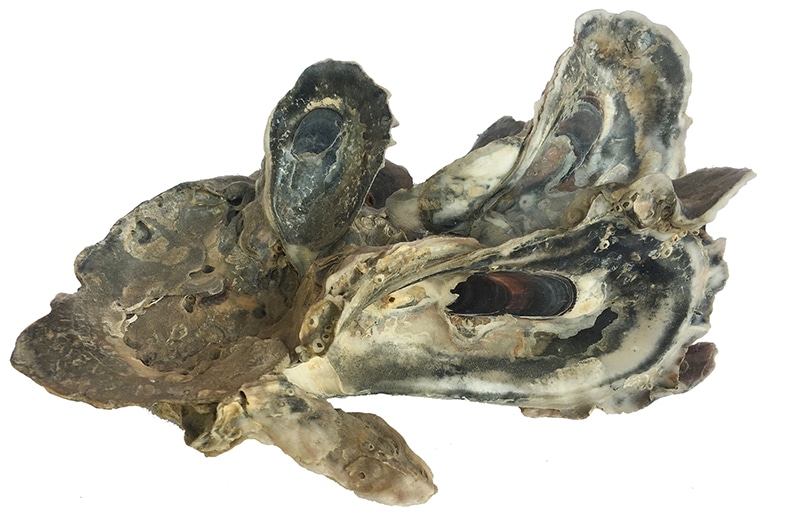BY KERRI COOKE
Oysters are an important source of food and income in countries around the world. Seafood is always in high demand since it’s considered a type of luxury food. Oysters are of great importance in Southwest Louisiana as well — as a means of income, a staple food in many Cajun dishes, and an important part of our culture as a whole.
I used to live in Cameron. I remember my mother often shucked oysters with a knife and swallowed them raw as they came out of their shell. I remember the excitement when there happened to be a small pearl on top of the meat. I remember the broken nails, the dirty hands, and the empty shells.
What was such a big part of my childhood and many others’ in the area is facing an ultimatum.
Where will the oysters in your next seafood gumbo come from? It’s possible they may not be locally caught, but may instead be imported from other states, as the oyster season in Southwest Louisiana is facing a possible early closure.
Oyster season in Southwest Louisiana began on Nov. 1. The full season usually lasts through March. But the Dept. of Wildlife and Fisheries is contemplating closing the fishing season early once a total of 11,000 sacks of oysters are obtained. They’re telling fisherman that they’re allowed 7,000 sacks on the west side and 4,000 on the east side of the Calcasieu Lake.
Each fisherman is allowed to bring in seven sacks of oysters per day.
These limitations have been imposed to increase conservation, since overfishing can lead to disastrous results and decimate a species if measures aren’t in place. Oysters not only fuel our local ecosystem, but prevent coastal erosion with their reefs as well. The Dept. of Wildlife and Fisheries worries that the oyster population is declining every year, and if they don’t put measures in place, Southwest Louisiana could be looking at an undersupply in oysters and a possible ecological crisis.
However, local fishermen and members of local organizations, such as the Oyster Task Force of the State of Louisiana, claim these new regulations are capable of doing more harm than good. They allege that there are more oysters available than the Dept. of Wildlife and Fisheries admits.
One local businessman hired a biologist to investigate the Dept. of Wildlife and Fisheries’ claims on behalf of the fishermen. Fisheries representatives maintain that last year, the Department said there were only 18,000 sacks of oysters available, while the fishermen were able to come out with 24,000 sacks on the west side of Calcasieu Lake alone. And they left a healthy amount of oysters in the habitat.
The biologist who was chosen for the job is sometimes used by the State of Louisiana in jobs relating to oil companies. According to his findings, there are more than 51,000 sacks of oysters on one reef alone.
Leo Dyson, a local oyster buyer, says he doesn’t understand why the new regulations are being set in place, since it seems there are plenty of oysters. He says that there are enough restrictions on oyster season already. And Cameron, which has been devastated by hurricanes, coastal erosion, and the BP oil spill, cannot survive with these types of regulations. The city, which has struggled economically since Hurricane Rita, would suffer a terrible blow if oyster season were cut short.
Also, says Dyson, the fishermen bought their license to fish the whole season. It’s a license whose cost is due to sharply increase to almost double what it is now.
Higher fees and less profit is a serious problem for those who earn a living off the water. The Dept. of Wildlife and Fisheries is suggesting a harvest that will amount to less than half of last year’s catch.
Clair Hebert Marceaux, the Director of Economic Development for Cameron Parish, says fishermen are going to have to find ways to supplement their income. Usually, the fishermen shrimp during shrimp season.
When shrimp season closes, oyster season opens. The oyster harvest tides the workers over financially until shrimp season opens again.
This year, if the oyster season produces half of what it did last year, fishermen won’t have the income they need to make it to shrimp season.
The fishermen are going out every day to catch their daily limit. But if the season is closed when they reach 11,000 sacks, then the citizens of Cameron Parish will have to find a way to supplement their income. Such supplementation can’t be easy, as there are few economic opportunities in Cameron besides fishing.
Dyson says that as a buyer, he can’t make money either if the season closes early. If there’s no catch, then there are no local oysters to buy and sell to local restaurants. In the event of an early closure, the price of oysters will go up, and local businesses will have to get their oysters from other states.
Dyson says it would really be a shame if it comes down to this, because we have the ability to get the resources from our own waters and support our own people and economy with local goods.
Ultimately, the decision about oyster season is up to the Secretary of the Dept. of Wildlife and Fisheries. The secretary is the only person who has the authority to close the season.
The future of oyster season all depends on the numbers. Unfortunately, when the number crunch came, the fishermen and their biologist came up with a vastly different population estimate for the oysters than did the Department of Wildlife and Fisheries.
Hopefully, there can and will be a conclusion to this issue that won’t compromise either the fishermen’s livelihoods or the Department of Wildlife and Fisheries’ conservation goals.















Comments are closed.